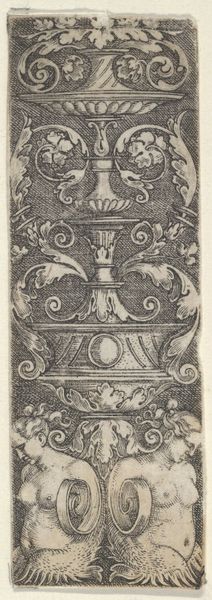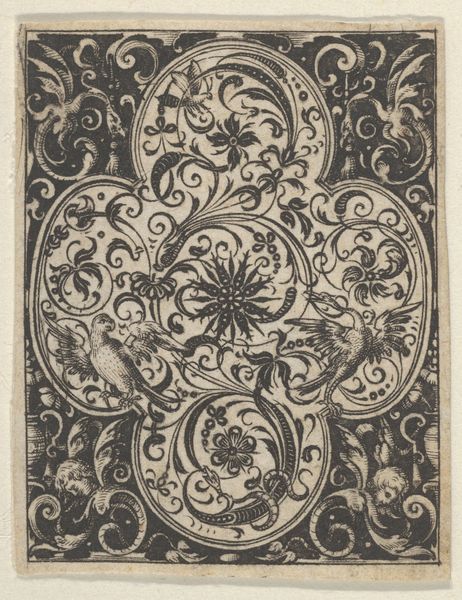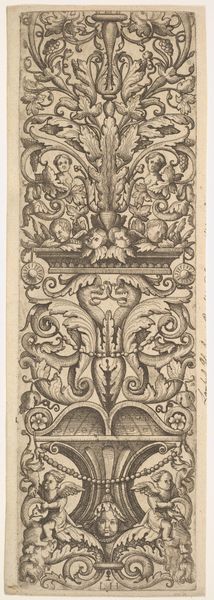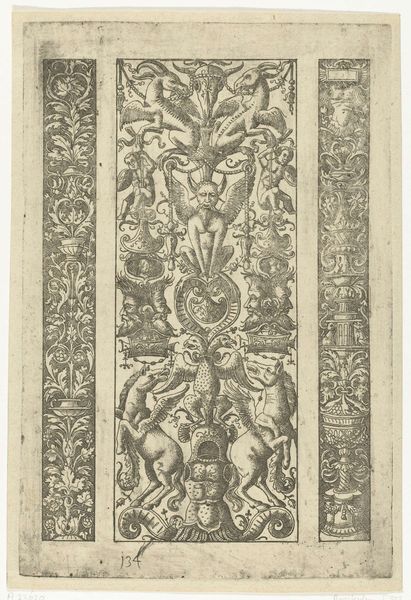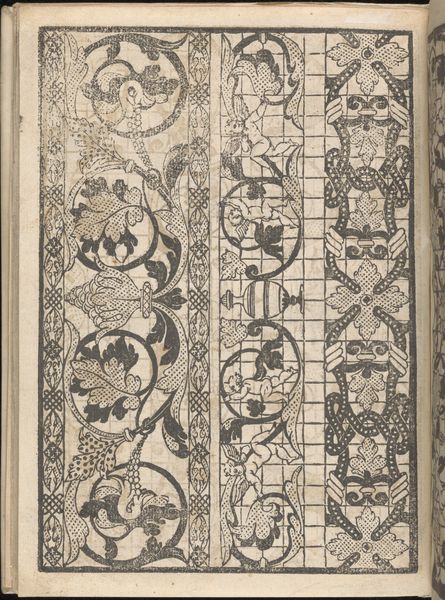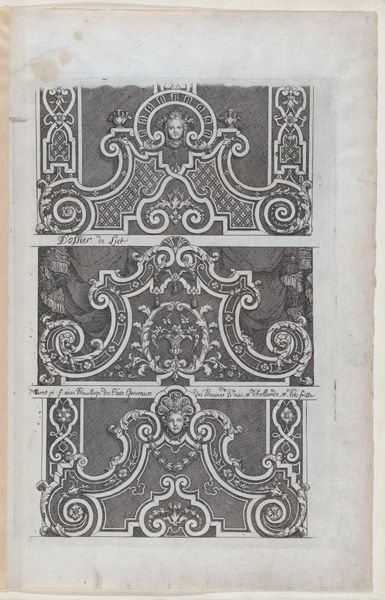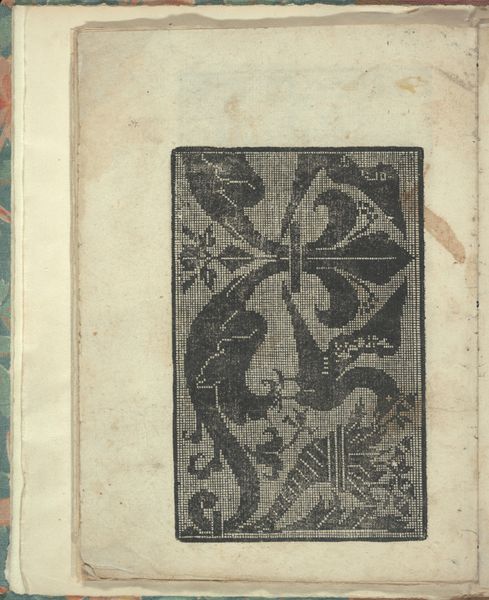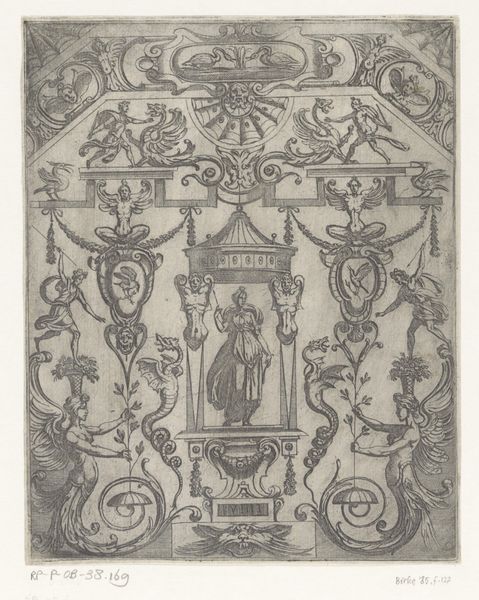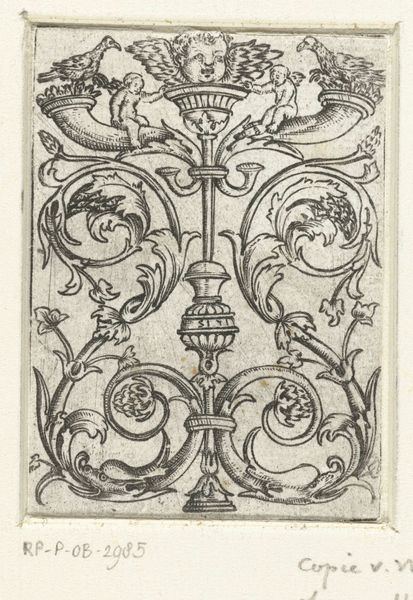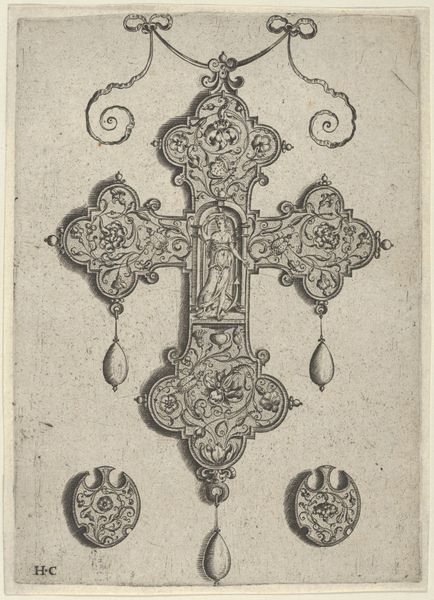
Ornament met rolwerk van bladranken en hoornen des overvloed 1500 - 1520
0:00
0:00
drawing, graphic-art, ornament, print, paper, engraving
#
drawing
#
graphic-art
#
aged paper
#
ornament
#
toned paper
# print
#
old engraving style
#
figuration
#
paper
#
11_renaissance
#
geometric
#
line
#
decorative-art
#
italian-renaissance
#
engraving
Dimensions: height 52 mm, width 34 mm
Copyright: Rijks Museum: Open Domain
Editor: Here we have a striking engraving, "Ornament met rolwerk van bladranken en hoornen des overvloed," made between 1500 and 1520 by Peregrino da Cesena. It’s incredibly detailed; almost looks like lace made of metal. What stands out to you when you look at this piece? Curator: It's fascinating to consider this engraving not just as art, but as a manufactured object. Look at the intense labor involved in its creation. Engraving requires skilled craftspeople, specialized tools. What does its proliferation – as a print – suggest about consumption patterns and the value placed on decoration in the Renaissance? Editor: That’s interesting! I hadn't really thought about the 'who' or the 'how' of its making beyond the named artist. So, is the intention of this piece as functional or ornamental? Does it straddle both? Curator: Exactly! It prompts us to challenge the high art/craft binary. Was this destined for an illuminated manuscript, perhaps, or intended to be a design template for artisans producing luxury goods? These engravings democratized ornament, making it available beyond the elite circles who could afford custom designs. Editor: So, you’re saying its impact extends beyond just being visually appealing, and says something more about society at the time. Curator: Precisely. By focusing on the means of production, we gain insight into the socio-economic context and broader cultural implications of artmaking during the Renaissance. Editor: I see this piece now with a different, richer appreciation! Thank you. Curator: And I find that reflecting on art through its materiality makes its cultural significance more immediate.
Comments
No comments
Be the first to comment and join the conversation on the ultimate creative platform.
